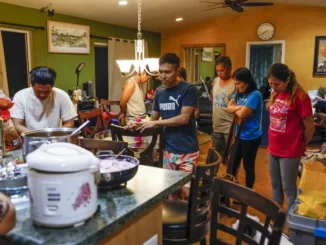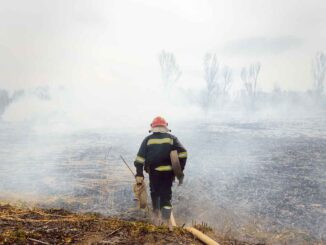
A wide array of U.S. federal agencies are descending on the Hawaiian island of Maui as relief begins pouring in following a devastating set of wildfires that completely destroyed the popular coastal town of Lahaina, displaced thousands of local residents and killed at least 111 people, according to the most recent information.
The Department of Housing and Urban Development (HUD) has instituted a 90-day moratorium on foreclosures of mortgages insured by the Federal Housing Administration (FHA), as well as a pause on foreclosures of mortgages in the Indian Home Loan Guarantee program.
Borrowers at or over the age of 62 who are engaged in a Home Equity Conversion Mortgage (HECM) have also been given a 90-day extension. All relief measures are effective as of the official disaster declaration issued by President Joe Biden on August 10.
HUD also detailed the availability of additional housing assistance for individuals upon request, including FHA insurance to disaster victims; HUD’s Section 203(k) loan program that allows the finance of a purchase or refinance of a house along with its repair through a single mortgage; flexibility to Community Planning and Development grantees, Public Housing Agencies and Tribes; and the availability of HUD-approved housing counseling agencies.
Hundreds of personnel from FEMA have been deployed to the disaster area, while the USDA is deploying food assistance programs for displaced residents. The State Department has also granted a fee waiver for people who lost their U.S. passport book or passport card as a result of the wildfires. The U.S. Army Corps of Engineers has also been deployed to clear roads and bolster electric service, while the Environmental Protection Agency is on-site to assist with household hazardous waste removal that will be “essential to begin recovery work in the impacted areas.”
But there are other issues that could present problems for the area as rebuilding begins, particularly with regard to homeowners insurance, according to recent coverage by the New York Times.
The status quo of relatively low home insurance rates — solidified by a general lack of natural disasters striking the islands — could be upset by the fires, which may exacerbate other issues impacting Hawaiian housing such as gentrification.
When Hurricane Iniki devastated the island of Kauai in 1992, Hawaii’s state legislature established a fund to provide hurricane insurance for homeowners. That program was dissolved in 2002, however, since the private insurance market was built back to “full strength,” according to the Times. While wildfires have not been a major problem for Hawaii in the past, this latest disaster could signal to insurance carriers that they could become more of an issue in the future.
“I think insurers are going to start factoring in the increased frequency and severity of wildfires,” David Marlett, a professor of risk management at Appalachian State University told the New York Times. “You’ve already seen that in California.”
With the increasing prevalence of natural disasters across the U.S. and the world, insurance companies have reacted by pulling back coverage in habitually-impacted areas. Recent data from Redfin showed that housing markets with flood and wildfire risk are booming since that additional climate risk has translated into lower costs in certain areas.
But insurance carriers themselves are pulling back or leaving, notably in California and Florida, and they’re citing climate risk as a primary driver.



